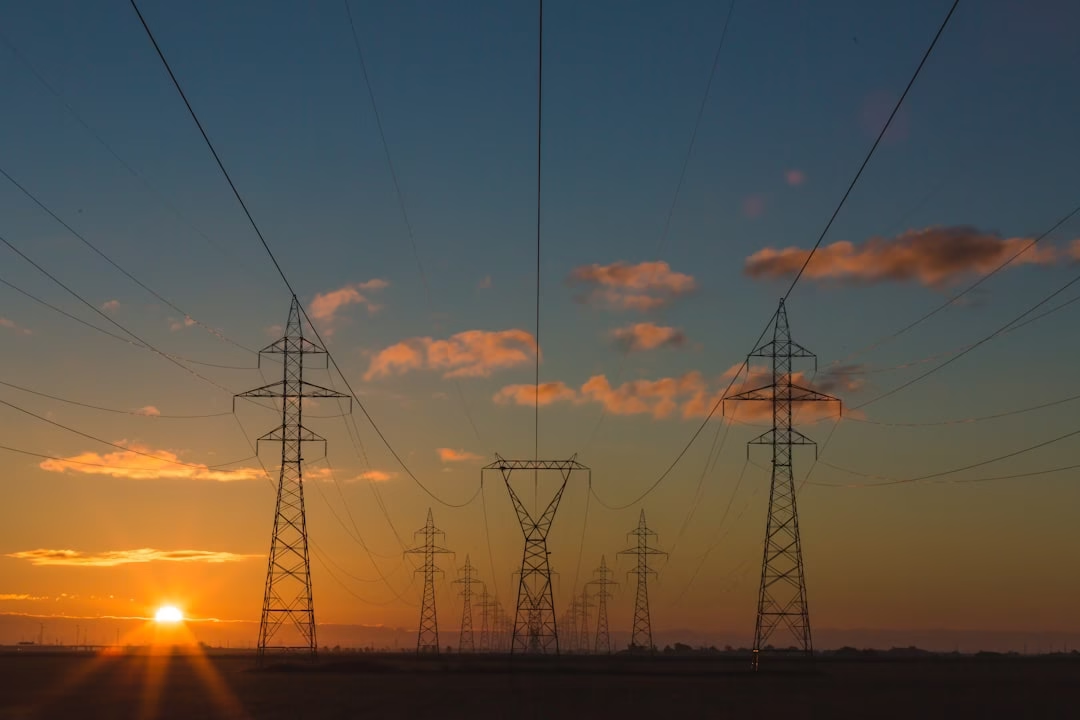Harnessing the Power of Water: How Hydropower is Paving the Way for a Sustainable Energy Transition

As the world grapples with the pressing challenges of climate change and the urgent need for sustainable energy solutions, hydropower emerges as a pivotal player in the energy transition. Harnessing the natural flow of water to generate electricity, hydropower offers a reliable and renewable energy source that stands in stark contrast to fossil fuels and nuclear energy. With advancements in energy efficiency and storage technologies, hydropower is not only enhancing its role in the global energy markets but also contributing significantly to energy security and the reduction of carbon emissions. In this article, we will explore the multifaceted benefits of hydropower, its innovations that promise a greener future, and its influence on global energy trends and policies. From smart grids and energy investments to the integration of hydropower with other renewable sources like solar power and wind energy, we will delve into how this age-old technology is evolving to meet the demands of a sustainable tomorrow.
- 1. The Role of Hydropower in the Energy Transition: A Sustainable Alternative to Fossil Fuels
- 2. Innovations in Hydropower: Enhancing Energy Efficiency and Storage for a Greener Future
- 3. Hydropower and Global Energy Trends: Shaping Energy Policy and Markets Amid Climate Change
1. The Role of Hydropower in the Energy Transition: A Sustainable Alternative to Fossil Fuels
As the world grapples with climate change and the urgent need to reduce reliance on fossil fuels, hydropower emerges as a pivotal player in the energy transition. This renewable energy source harnesses the power of flowing water to generate electricity, making it a sustainable alternative that aligns with global energy trends towards cleaner energy solutions.
Hydropower contributes significantly to energy security by providing a reliable and consistent energy supply. Unlike fossil fuels, which are subject to volatile market fluctuations and geopolitical tensions, hydropower benefits from the natural cycle of water. It also boasts high energy efficiency, with some hydropower plants achieving more than 90% efficiency in converting kinetic energy into electricity.
The integration of hydropower into energy markets complements other renewable sources, such as solar power and wind energy. These intermittent energy sources can benefit from the energy storage capabilities of hydropower, ensuring a balanced and stable energy supply. This synergy enhances the effectiveness of smart grids, allowing for better energy distribution and management across networks.
In addition to its role in energy storage, hydropower plays a crucial part in energy policy. Governments are increasingly investing in hydropower as part of their climate change mitigation strategies. By promoting this green energy source, policymakers can support the development of energy innovations that drive the transition away from fossil fuels and towards a more sustainable energy future.
Moreover, hydropower projects can stimulate energy investment and create job opportunities, boosting local economies. As nations transition to renewable energy sources, hydropower stands out as a viable option that also supports the growth of bioenergy, thermal energy, and even hydrogen energy initiatives.
In conclusion, as we move toward a future powered by renewable energy, hydropower will be essential in shaping energy R&D and ensuring a more sustainable, efficient, and secure energy landscape for generations to come. By investing in and optimizing hydropower, we can significantly reduce carbon emissions and enhance global energy resilience, ultimately paving the way for a comprehensive energy transition.
2. Innovations in Hydropower: Enhancing Energy Efficiency and Storage for a Greener Future
The hydropower sector is witnessing remarkable innovations aimed at enhancing energy efficiency and storage, pivotal for a greener future. As the world transitions to renewable energy sources, hydropower plays a crucial role in this energy landscape, especially in the face of climate change and the need for energy security.
One significant development is the advent of more efficient turbine designs that maximize energy conversion from flowing water. These innovations not only improve energy efficiency but also reduce the environmental impact associated with traditional hydropower plants. Enhanced turbine technology can lead to increased energy output, making hydropower a more attractive option compared to fossil fuels and nuclear energy.
Moreover, energy storage solutions are becoming integral to hydropower systems. By incorporating advanced energy storage technologies, such as pumped hydro storage, facilities can store excess energy generated during peak flow periods. This stored energy can then be released during high demand, effectively stabilizing energy markets and ensuring a consistent power supply. Such systems facilitate the integration of intermittent renewable sources like solar power and wind energy, further promoting a diversified and resilient energy portfolio.
Smart grids are also emerging as a transformative technology in hydropower. By leveraging real-time data and communication technologies, smart grids improve the management of energy transportation and distribution. They enable better forecasting of energy demand and supply, optimizing the use of hydropower alongside other renewable energies. This integration supports energy transitions and enhances energy efficiency across the board.
In addition, research and development (R&D) in hydropower technologies is focused on carbon capture methods that can mitigate emissions from hydroelectric plants. These innovations align with global energy trends toward sustainability and the reduction of the carbon footprint associated with energy production.
As the world embraces renewable energy, hydropower's role in energy investment and policy is becoming increasingly important. Governments and organizations are recognizing the need to support hydropower projects as part of a broader strategy to transition from fossil fuels to green energy. This shift not only contributes to energy security but also opens up new opportunities for energy exports and imports, enhancing the global energy economy.
In summary, innovations in hydropower are setting the stage for a more sustainable energy future. By improving energy efficiency, expanding energy storage capabilities, and integrating with smart grid technologies, hydropower is poised to contribute significantly to the energy transition. As we focus on climate change and the need for cleaner energy solutions, these advancements underscore the vital role hydropower will play in the evolving landscape of global energy.
3. Hydropower and Global Energy Trends: Shaping Energy Policy and Markets Amid Climate Change
The role of hydropower in shaping global energy trends is increasingly critical as nations navigate the complexities of climate change and the transition to sustainable energy systems. As a renewable energy source, hydropower stands out for its capacity to generate large amounts of electricity while supporting energy security and reducing dependence on fossil fuels. Countries are recognizing the need for robust energy policies that integrate hydropower into broader energy markets, enhancing energy efficiency and promoting green energy initiatives.
Amidst the global energy transition, hydropower contributes significantly to energy stability, especially as energy storage solutions become more essential for balancing intermittent renewable sources like solar power and wind energy. The integration of smart grids allows for more effective management of hydropower resources, optimizing energy transportation and distribution. These innovations are vital for meeting the increasing demand for energy while minimizing carbon footprints.
Moreover, the ongoing shift toward decarbonization is driving investments in hydropower infrastructure, making it a key player in energy economics. By prioritizing hydropower alongside other renewable sources such as bioenergy and thermal energy, countries can foster a diversified energy portfolio that enhances resilience against climate change impacts. This strategic energy investment not only supports domestic energy needs but also positions nations favorably in the global energy markets, facilitating energy exports and reducing reliance on energy imports.
In conclusion, hydropower’s alignment with global energy trends underscores its importance in shaping energy policy. As governments and organizations continue to prioritize energy innovations and R&D, the role of hydropower in the broader context of energy transition—alongside nuclear energy, hydrogen energy, and offshore energy—will be crucial for achieving sustainable and climate-resilient energy systems worldwide. The focus on carbon capture and distributed energy solutions further emphasizes the need for a comprehensive approach that embraces hydropower as part of the solution to the pressing challenges posed by climate change.
In conclusion, hydropower stands out as a crucial player in the global energy transition, offering a sustainable alternative to fossil fuels and enhancing energy security. As we strive for a greener future, innovations in hydropower technology are paving the way for improved energy efficiency and energy storage solutions, which are vital for integrating renewable energy sources into our existing energy markets. The ongoing evolution of energy policy reflects a growing recognition of hydropower's role in addressing climate change while balancing the demands of energy exports and imports.
Moreover, as we navigate the complexities of global energy trends, it is clear that hydroelectric power will significantly contribute to achieving a diversified energy portfolio alongside solar power, wind energy, and nuclear energy. Investments in energy R&D and smart grids will be essential for harnessing the full potential of hydropower, particularly in supporting distributed energy systems and electric vehicles. By prioritizing hydropower and other renewable energy sources, we can create a resilient energy landscape that advances the goals of energy innovation and enhances climate change mitigation efforts.
Ultimately, embracing hydropower not only strengthens our commitment to green energy but also fosters a sustainable future where energy economics align with environmental stewardship, ensuring a cleaner, more sustainable planet for generations to come.
References:
[Please add relevant sources here]




